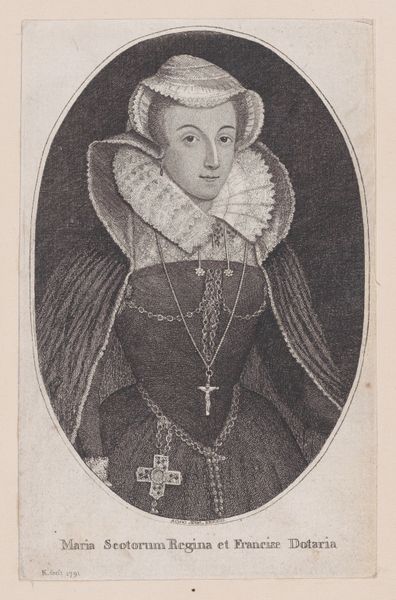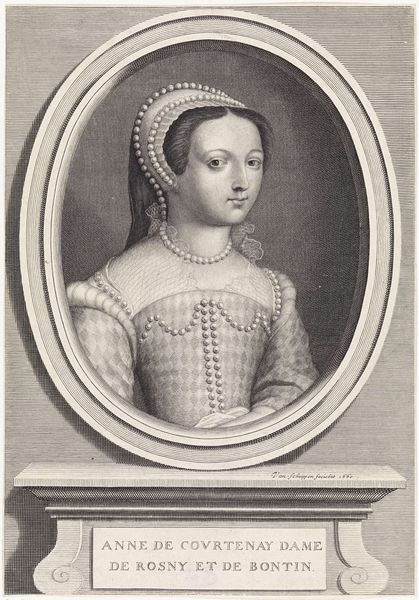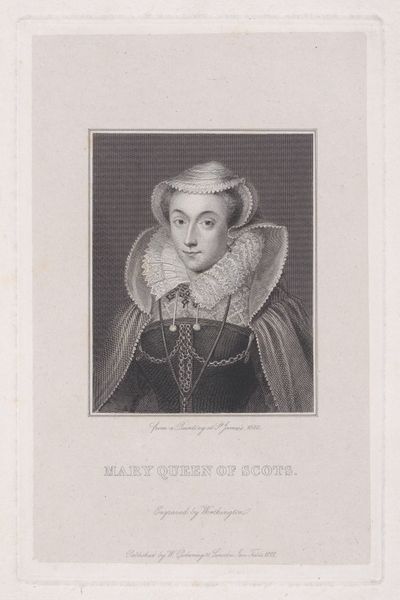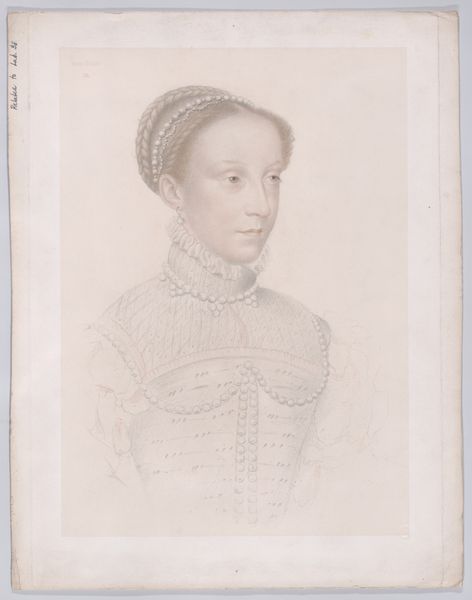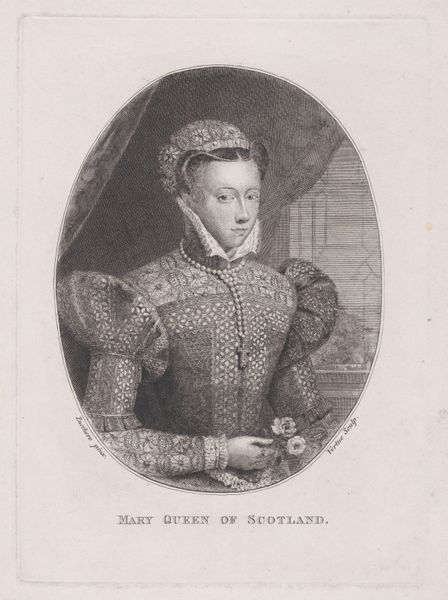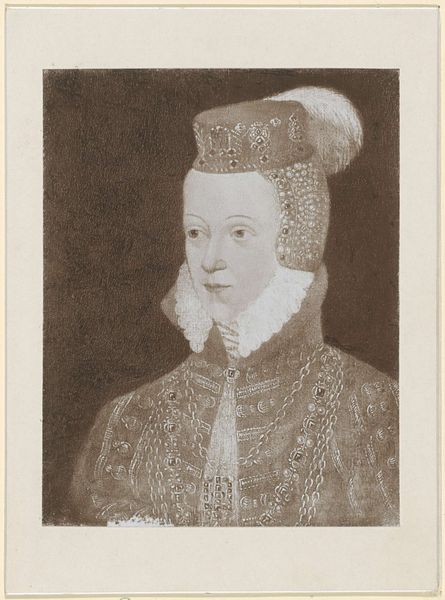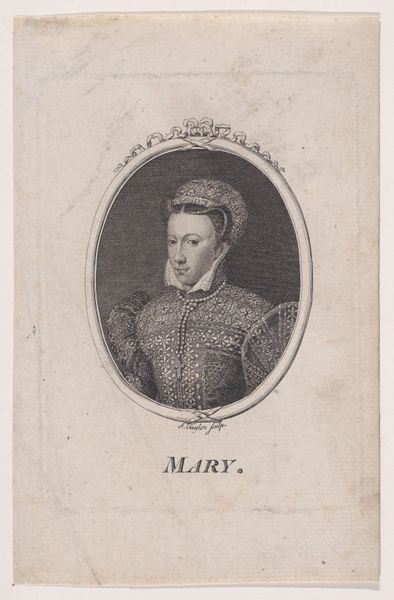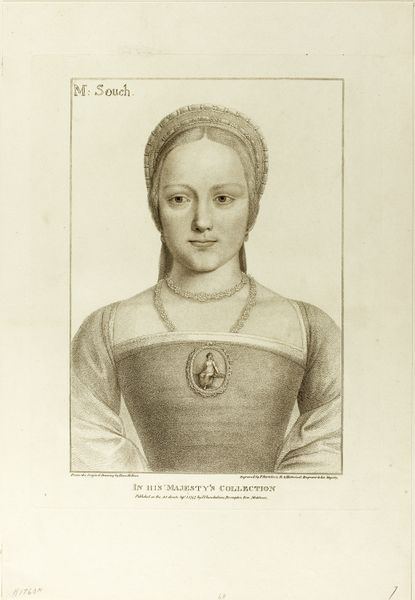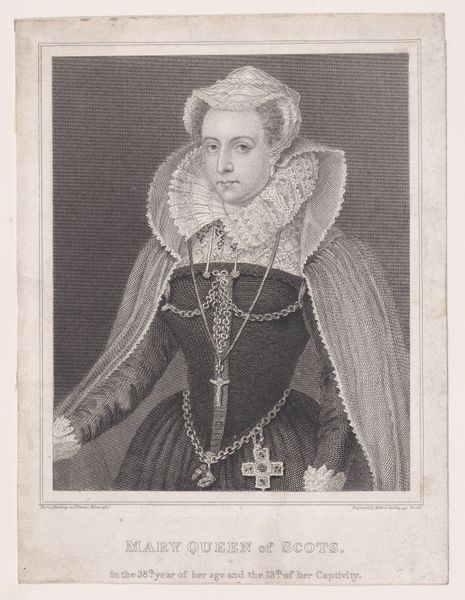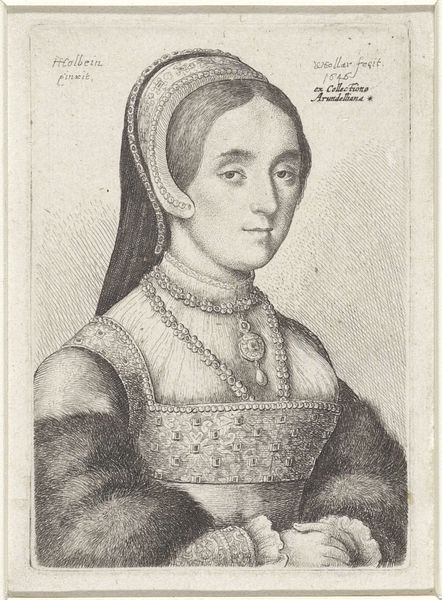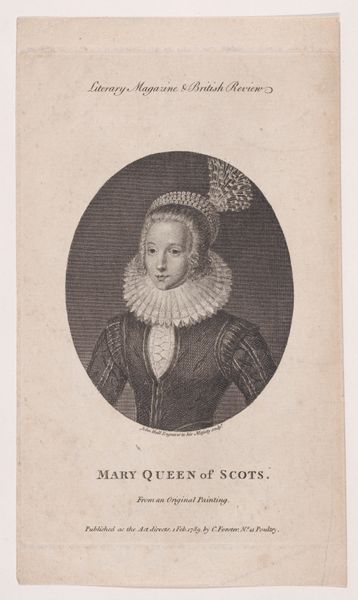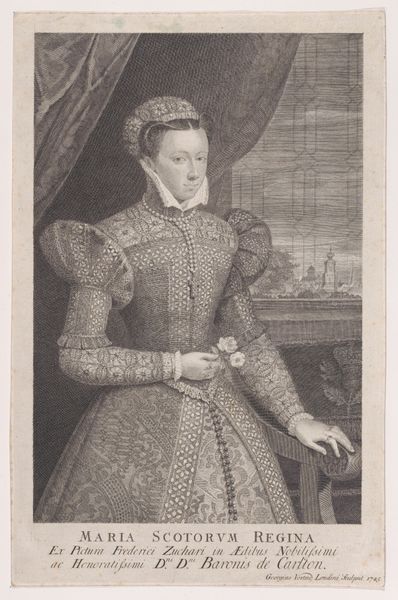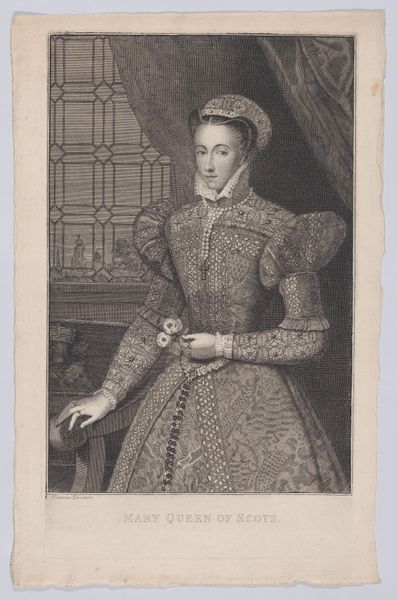
drawing, print, engraving
#
portrait
#
drawing
#
neoclassicism
# print
#
portrait drawing
#
engraving
Dimensions: Plate: 7 1/2 × 5 1/2 in. (19 × 14 cm) Sheet: 13 9/16 × 9 13/16 in. (34.4 × 25 cm)
Copyright: Public Domain
Curator: Edward Harding created this print of Mary, Queen of Scots in 1797. It’s currently held at the Metropolitan Museum of Art. Editor: It’s stark. That contrast between the stark white of the ruff and cap and the flat darkness everywhere else...it draws the eye to her face but creates a very somber, almost foreboding effect. Curator: Well, Harding’s work, especially these portrait engravings, was very much embedded in the social and political landscape of his time. He was working for an audience fascinated by historical figures, and Mary was a popular tragic queen. Engraving, as a print medium, was interesting; consider the labor that went into reproducing and distributing her image. Editor: Absolutely. And look how precise and deliberate the hatching and cross-hatching is! The density builds to give form, especially in the face. There’s also something hauntingly beautiful in the symmetry. That simple composition focuses your attention; the strict vertical lines created by her figure and costume elements create this incredible feeling of order and yet imprisonment. Curator: The fact that Harding used printmaking also allowed for broader access to such images. It moves away from unique artwork only attainable for an elite consumer and towards broader circulation that may allow for various political allegiances, social class, or geographic location. This allowed his pieces to influence political sentiments beyond a single audience. Editor: So, this wasn't about creating a singular, precious object, but instead enabling distribution and consumption. How fascinating that shifts our understanding of the image completely! Her status and fame were in the service of reproduction for commercial reasons. It raises questions, doesn’t it? Curator: Definitely changes your reading. For me, thinking about it in terms of access and circulation, I see how Harding captured not just an image of Mary, but really, a means to democratize iconic, though maybe reductive, historical and political personas. Editor: This reminds me to look deeper; it’s so easy to get lost in pure aesthetics, forgetting the complex matrix of production that shapes what we see and feel.
Comments
No comments
Be the first to comment and join the conversation on the ultimate creative platform.
